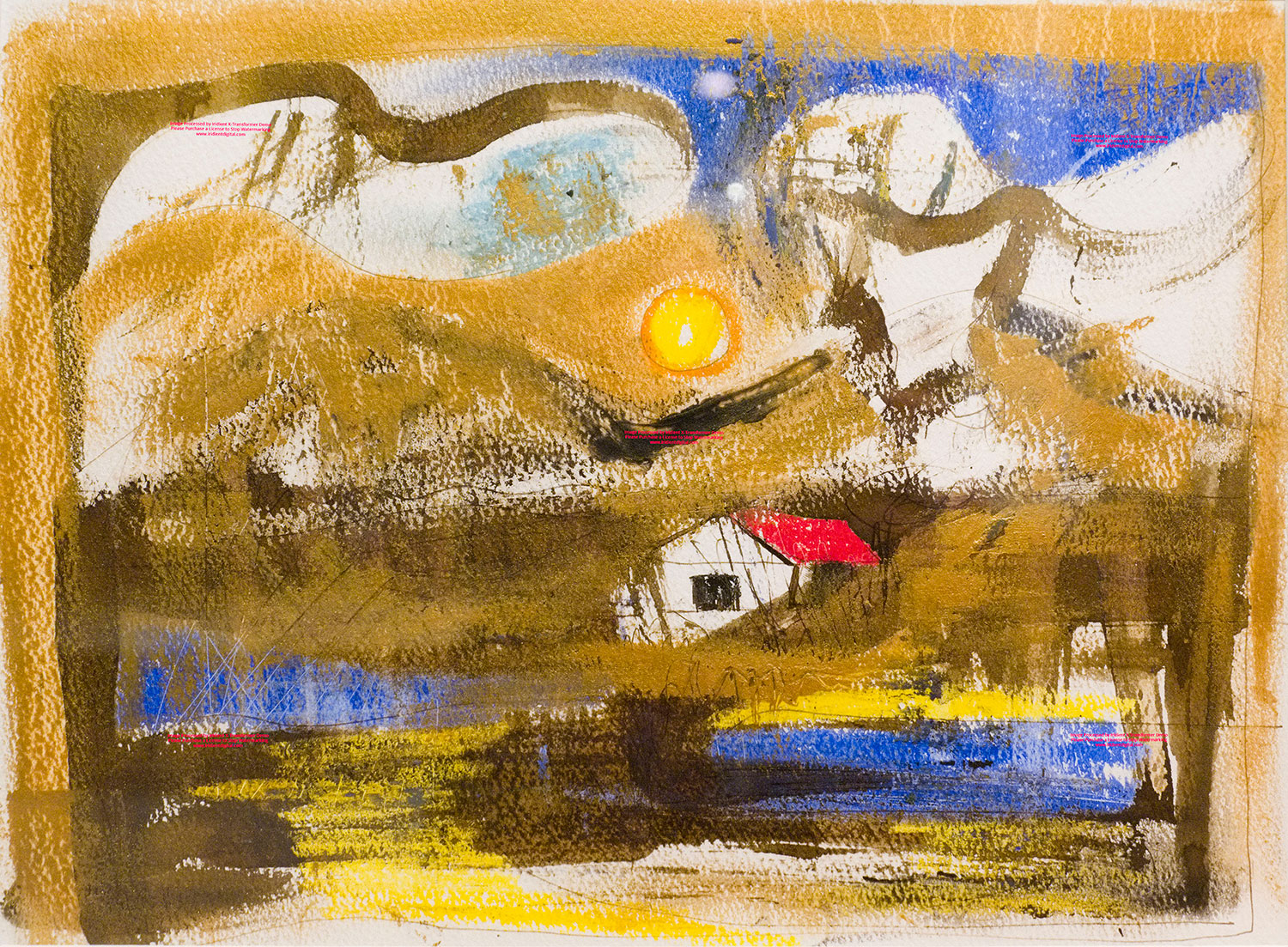Geoffrey Mukasa (Ugandan, 1954 – 2009)
Untitled (Landscape at sunrise), 2000
Untitled (Landscape with two Hills), 2000
Signed and dated ‘signature’ (centre)
Unsigned
Mixed media collage, pastel and gold leaf
32 x 35 cm each
Ksh 230,000 – 400,000
(US$) 2,000 – 3,500 for the pair
Provenance: Private collection
Sold Ksh 491,820
Geoffrey Mukasa is widely recognized as one of East Africa’s most influential painters. Born in 1954 to a prominent Ugandan doctor, many people expected Mukasa to follow in his father’s footsteps but the murder of his father during Idi Amin’s coup brought drastic changes to Mukasa’s life, including his leaving Uganda to study art.
Mukasa travelled to India to take a degree in Art at Lucknow University, graduating in 1984. During this time, he was greatly inspired by Indian and European aesthetic values. He threw himself into his work with vigour, focusing mainly on human relationships with the environment and one another. In the early 1990s, on returning to Uganda, Mukasa became a key figure in the movement to revive cultural life in Kampala. This cultural movement was seen as a unifying force and an inspiration for the nation’s recovery after years of military dictatorship.
Mukasa’s oldest friends said that he began working in collage in his early years as an artist because of the difficulty in accessing classic art materials in Kampala at that time. It was only later, and to great success, that he began to paint on canvas.
The depth of influence of Indian aesthetics on Mukasa was reiterated by his inclusion in an exhibition of Indian Modern Art at Villa Vassilieff Gallery, Paris, 2017. In 2016, Mukasa’s work was shown in a solo presentation at Art Dubai Modern. His work is held in collections in America, Europe and Africa, and although appears at international auctions, including Sotheby’s and Bonhams.
Publications include Mukasa Geoffrey – the Artist’s Life in Uganda, AKA Gallery Kampala published by Maria Fischer, Rose Kirumira, Paul Lubowa and Josephine Mukasa, 2011.



